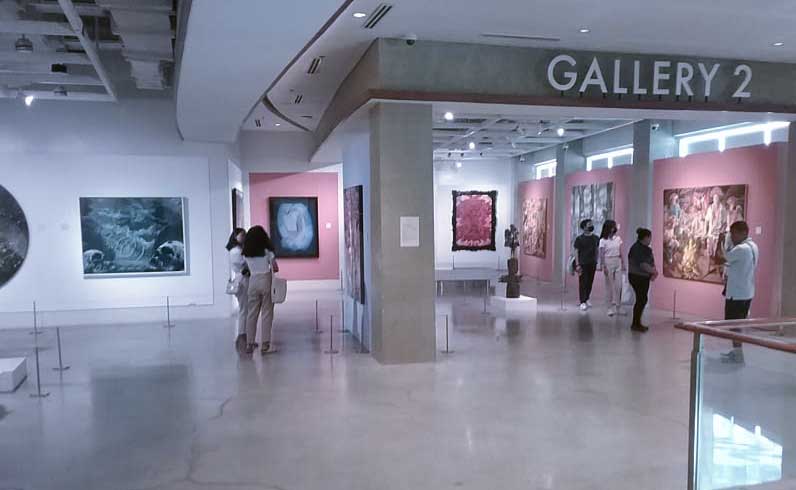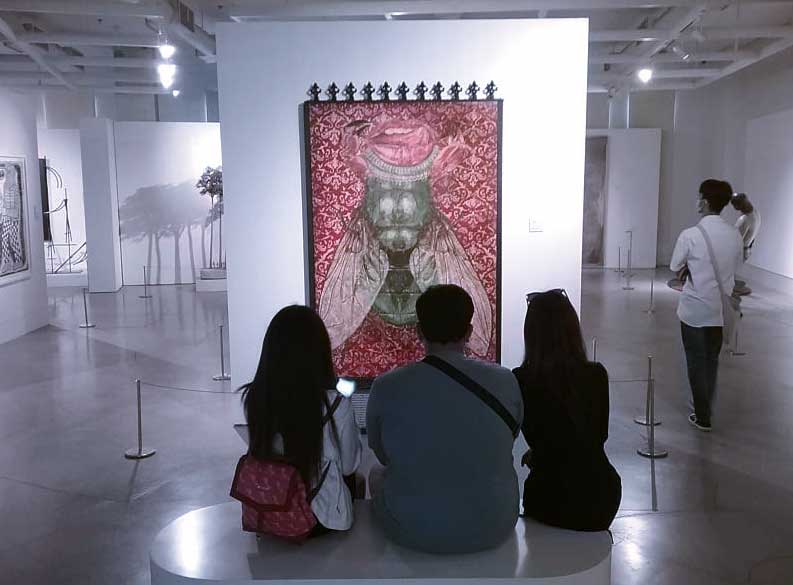By John Anthony S. Estolloso
Last March 18, the Iloilo Museum of Contemporary Art hosted an ‘open house’ of sorts in celebration of their five-year presence in the city. With ticket prices relegated to a voluntary donation commensurate to the visitor’s means, the museum was teeming with people, some of them were perhaps neophyte art viewers who took advantage of the artistic field day to indulge in making creative connections, or at the very least, to satisfy sheer curiosity of knowing what are displayed inside a gallery of art.
On that same day was launched the Iloilo Art Review, following in the wake of the circulation of the Iloilo Art Book, released some few weeks earlier. Subsequent these events would be a number of artistic shows and installations that went on exhibit, for the perusal and enjoyment of the general public.
Regardless of what cultural wave or trend will follow this stint of artistic activities, one cannot deny that local art, its appreciation and patronage – or the basic consciousness of its presence – is very much alive in the city. That some of our public spaces are turned into open-air exhibitions and that there are willing patrons to encounter these bespeak of one surety: there is a keen and discerning audience among the Ilonggos ready to receive the creative expressions and outputs of their artists.
For audiences are integral to the existence and recognition of art. One harks back to the philosophical query of when a tree falls in the middle of the forest and there is no sapient or rational being to witness, nay, to experience the thundering crash produced, who would voice out that there was sound produced? All the science in the world would insist on the physical fact; still, that fact requires a human persona to process and affirm – the same way that art subjected to the external gaze of an evaluative audience ensures that it does not stagnate as a personal and obscure memoir of the artist, devoid of communal sentiment or social relevance.
Noted art critic and aesthete George Dickie, in his institutionalized theory of art appreciation, formalizes the structure that governs this response to art and art scenes. Quite removed from the artist’s studio and the sublime experience of making art would be the artworld and the system that maintains the acknowledgment and valuing of creative outputs. This relationship underlines the readiness of the audience to ‘receive’ the artwork, which in turn highlights the recurring question in any time period: was any society ever truly ready for Art, with all its controversy, unconventionality, and vagary?
Admittedly, our cultural circles and tastes have moved far beyond the conventional aesthetic realms of the humanist, the renascent, and the romantic. Our generations have been born to the fast and furious: everything everywhere must happen all at once and that frenzied furor permeates even the very cultural artifacts that surround us: fast food, fast fashion, fast talk. Our attention span is reduced to three to five-minute moving segments on social media platforms where most of our encounters with art occur, usually in the most superficial and transient manner.
In obverse, art in essence is a contradiction to this hurriedness. Art invites (or should it be ‘insists for’?) its audience to stop and ponder, to question and ruminate, to comfort and disturb, to court controversy and explicate vagueness, to dissemble order and organize chaos, to ascertain and equivocate meanings – and most important to our contemporary contexts, to search for and cherish the gaps that allow us the aforementioned.
In the pauses that make us stand still and gawk at paintings and sketches, in the stolen glimpses at street murals and installation art, in the fleeting glances at public sculpture and architecture, in the awe-struck minutes with which we behold the grandness of public monuments, in the deliberate stops and rests in our struggle for survival and squalor, there the audience aspirates the Excellent and the Beautiful. These are the gaps where we breathe Art.



















